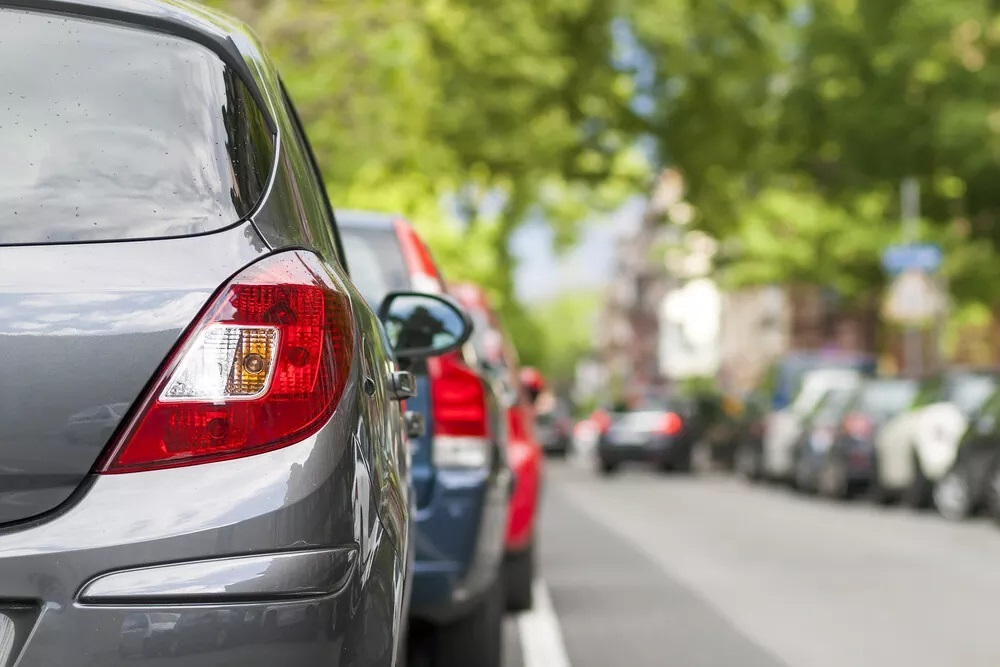In our first blog post about the hidden cost of parking, we talked about how onerous parking minimums can discourage development and depress the value of a neighborhood.
This week we’re going to focus on the ways that parking policy can have a disproportionately negative effect on our most vulnerable neighbors. Parking costs the same for everyone right? While that may be true at the meter, it’s not always so simple in the long run. Again, policy around parking has an effect that ripples far beyond the metered spaces.
In many ways, the people who pay the most as a result of bad parking policy are those who never park a car. The rate of car ownership among Americans living below the poverty line is much lower than the rest of the US population. Without a personal car, many lack access to jobs, education, healthcare, and other essential building blocks of daily life.
Designing every project with plentiful parking as a prerequisite causes a development pattern that necessitates private car ownership. When each building is an island in a sea of parking, every other mode of transportation becomes more difficult. Each activated space is pushed farther apart, making walks, bike rides, and bus headways longer, more dangerous, and less feasible. As this pattern of development continues, parking requirements become a self-fulfilling prophecy. We need more parking because we designed so much parking.
Several decades of car-oriented, low-density development are manifesting in measurable ways all over the country. The average American spends a whopping 13-percent of their income on transportation. Even worse, according to the Institute for Transportation and Development Policy, “ In 2016, in the US, the lowest-earning 20-percent of the population earned an average of $11,933, and spent an average of $3,497 (29-percent) on transportation costs.”
The people who have the least to spend, are the most burdened by the cost of transportation. Additionally, a majority of those people don’t have much of a choice. In a 2019 survey, 57–percent of Americans said that they could not easily get to work without a car.
When we require parking as a prerequisite to development, we require car ownership to access our city. This development pattern effectively locks non-drivers out of large sectors of our society.
If the main challenge to transportation equity is a built environment that necessitates personal car ownership, the solution is to encourage developments that support a variety of transportation modalities. High parking minimums can be a poison pill for the exact kind of affordable housing and transit-oriented development that begin to lessen the transportation cost burden.

According to SPARCC “Building and maintaining excess parking can add significant unnecessary costs to affordable housing projects, with a single underground space costing almost $40,000 to build (Enterprise Community Partners). For housing built near transit, this may be a wasted expense.”
So, we are requiring parking spaces to be built, which will ideally not be used, and rolling that cost into developments that should be affordable. In many cases, the numbers just don’t work, and the development doesn’t happen at all. This leaves us with a lack of affordable housing, a lack of transit-oriented development, and an excess of parking.
Parking minimums are often seen as a win for a city. They’re seen as a way to get a public good from developers, but we may be trading affordability and equity for empty parking lots and higher rents.
High parking minimums encourage us to build new places and even redevelop old ones, in a way that necessitates car ownership. Rather than a car being a convenient transportation option, it becomes a tax required to access education, jobs, medical care, and everything else that comprises a happy, healthy life.
Parking minimums are often seen as a way to “get something” for a city from a developer. On-street and public parking are managed by the city, so parking minimums are viewed as taking some of that burden off the public. While it may be true that these requirements to force developers to spend more money, the parking that’s being provided doesn’t necessarily serve the community in an equitable way.
Related News
-
Why we say yay to two-way streets
Filed Under: Developer, Downtown Birmingham, Filling Vacant Spaces, Front Page, Transportation, Yaysayers
REV Birmingham is a long-time advocate for making the switch to two-way streets downtown, and this is something recommended by planners studying our downtown for years. In fact, the team that developed the 2004 City Center Master Plan recommended many street changes but noted 4th Avenue North conversion should take place “immediately.” We believe this project is a catalytic moment for Birmingham – but you may find yourself wondering why that is.
-
The Key Tool for Urban Revitalization: Downtown BHM's Business Improvement District
Filed Under: Business-Proving, Developer, Downtown Birmingham, Front Page, Get Involved, Potential-Proving, Why BHM
By the time REV took on BID management in 2018, downtown had a new set of needs from its BID. Downtown Birmingham in the ‘90s had a population mainly of 9 to 5 employees. But the downtown of 2018 had a whole new population of residents and visitors throughout the day and night. We had new opportunities to create positive experiences, inviting them into more downtown businesses and public spaces, and to keep them coming back for more.
-
Introducing the six businesses that call Nextec home
Filed Under: Business-Proving, Developer, Downtown Birmingham, Filling Vacant Spaces, Front Page, Historic Preservation, Potential-Proving, Why BHM
On the corner of 3rd Avenue and 16th Street North, you’ll find Nextec, a redevelopment of the 90-year-old, 65,000-square-foot Edwards Motor Company building (also formerly known as the Sticks ‘N’ Stuff building). With experience in historic renovation, developer Michael Mouron, chairman of Capstone Real Estate Investments, began this civic project in 2021 as a space for business startups to continue their work in the Magic City – a function encouraged by REV Birmingham.